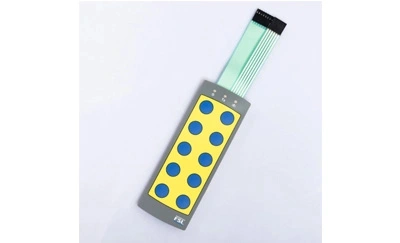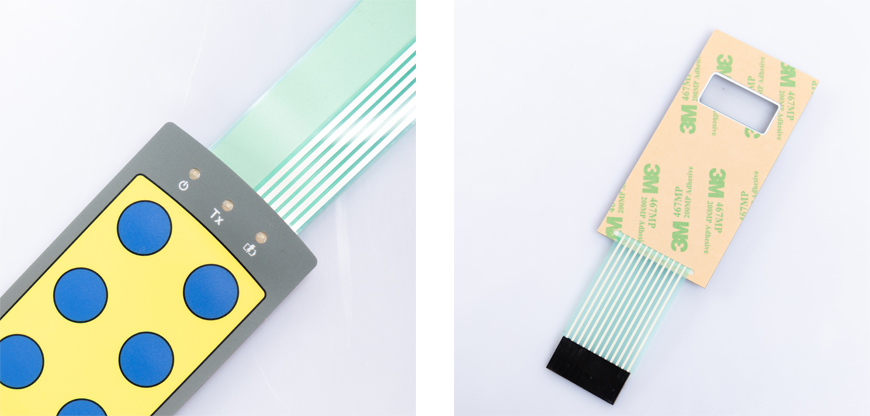
In today's digital age, membrane switches have become an integral part of various electronic devices, from microwave ovens and remote controls to medical equipment and industrial machinery. These flexible and durable interfaces are designed to provide tactile feedback and user-friendly control. If you're interested in learning how to design a membrane switch that meets your specific needs, you've come to the right place. In this article, we will walk you through the process step by step, ensuring that you have a clear understanding of the design principles involved.
Membrane switches are versatile user interface solutions that offer numerous advantages, such as resistance to moisture, chemicals, and wear, making them suitable for a wide range of applications. In this article, we will delve into the intricacies of designing a membrane switch, ensuring that you have a comprehensive understanding of the process.
What Is a Membrane Switch?
A membrane switch is a flexible, low-profile, and durable electronic interface that uses a combination of membrane layers to provide input commands. It consists of several layers, including a graphic overlay, circuit layer, spacer layer, and adhesive layer.
Key Components
The key components of a membrane switch include tactile dome switches, conductive traces, and a graphic overlay. These components work together to create a reliable and user-friendly interface.
User Interface Requirements
Before designing a membrane switch, it's crucial to define the user interface requirements. Consider factors such as the number of buttons, tactile feedback, and the overall user experience.
Environmental Considerations
Take into account the environment in which the membrane switch will be used. Factors like temperature, humidity, and exposure to chemicals can impact the switch's performance.
Membrane Layers
Choosing the right materials for each layer of the membrane switch is essential. Materials should be selected based on factors like flexibility, durability, and chemical resistance.
Adhesive and Overlay Materials
The adhesive and overlay materials play a critical role in the switch's lifespan and performance. Proper selection is necessary to ensure long-term functionality.

Traces and Conductive Paths
The design of the conductive traces is crucial for the switch's responsiveness. Properly designed traces ensure reliable electrical connections.
Dome Switches
Tactile dome switches are responsible for providing feedback to the user. Their design and placement are essential for a comfortable user experience.
Graphic Overlay Design
The graphic overlay is the visible part of the custom membrane switch. Designing it effectively involves considering aesthetics, clarity, and functionality.
Printing and Labeling Techniques
Various printing and labeling techniques can be employed to enhance the appearance and durability of the graphic overlay.
LED Backlighting
Adding LED backlighting to a membrane switch can improve visibility in low-light conditions. Proper integration is essential for uniform lighting.
Fiber Optic Backlighting
Fiber optic backlighting is another option to consider for membrane switch design. It offers flexibility and even illumination.
Layer Alignment
During assembly, precise layer alignment is critical to ensure that all components work seamlessly together.
Adhesive Application
The adhesive layer is responsible for securing the membrane layers. Proper application techniques are essential for long-term durability.
Functional Testing
Thorough functional testing is necessary to verify that the membrane switch performs as expected.
Durability Testing
Durability testing assesses the switch's ability to withstand various environmental factors and usage conditions.
Logo Integration
Customizing the graphic overlay with logos or branding elements can help create a unique product identity.
Color and Aesthetics
Consider the color scheme and overall aesthetics of the membrane switch to align with your product or brand.
Rapid Prototyping
Prototyping allows for testing and refinement of the design before moving into mass production.
Mass Production
Once the design is finalized, mass production can begin to meet the demand for your membrane switches.
Proper Installation Guidelines
Provide clear instructions for the proper installation of the membrane switch to ensure optimal performance.
Maintenance Tips
Offer maintenance tips to extend the lifespan of the switch and minimize downtime.
1. Are membrane switches suitable for outdoor use?
Yes, membrane switches such as silicone membrane keyboard can be designed to withstand outdoor conditions, but proper sealing and material selection are crucial for durability.
2. What is the lifespan of a membrane switch?
The lifespan of a membrane switch can vary depending on factors like usage frequency and environmental conditions but can typically range from 1 million to 10 million actuations.
3. Can membrane switches be customized for unique applications?
Absolutely! Membrane switches are highly customizable and can be tailored to meet the specific requirements of different industries and applications.
4. How do I clean and maintain a membrane switch?
To clean a membrane switch, use a soft, lint-free cloth and mild detergent. Avoid abrasive materials or harsh chemicals that could damage the overlay.
5. Are membrane switches cost-effective for mass production?
Yes, membrane switches are cost-effective for mass production due to their efficient manufacturing process and durability, making them a popular choice in various industries.